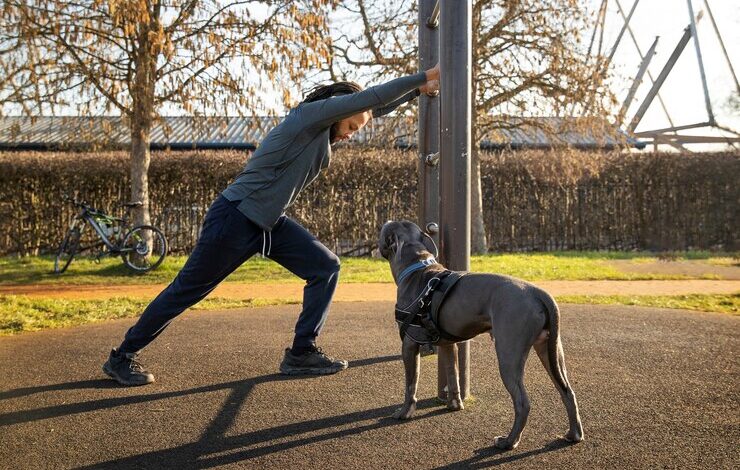From Barking to Behaving: A Guide to Dog Training and Behavior

Training your dog is a rewarding journey that strengthens the bond between you and your furry friend while ensuring a harmonious household. Whether you’re dealing with incessant barking, destructive behavior, or simply want to teach your dog some basic commands, this guide will walk you through the essentials of dog training and behavior.
Understanding Dog Behavior
Before diving into training techniques, it’s important to understand why dogs behave the way they do. Dogs are social animals with instincts rooted in their wild ancestors. Understanding these instincts can help you address behavioral issues more effectively.
Common Behavioral Issues
- Barking: Dogs bark for various reasons—attention, boredom, anxiety, or to alert you of something. Identifying the cause is the first step in addressing excessive barking.
- Chewing: Chewing is a natural behavior for dogs, but it becomes problematic when they chew on inappropriate items. Providing appropriate chew toys can help redirect this behavior.
- Jumping: Dogs often jump on people to greet them. While it may be cute in puppies, it can be dangerous in larger dogs.
- Digging: Dogs dig for various reasons, including boredom, hunting instincts, or to cool down. Providing a designated digging area can help.
- Separation Anxiety: Some dogs become anxious when left alone, leading to destructive behavior. Gradual desensitization and creating a safe space can help alleviate this anxiety.
Basic Training Principles
Training your dog requires patience, consistency, and positive reinforcement. Here are some fundamental principles to keep in mind:
- Positive Reinforcement: Rewarding your dog for good behavior is more effective than punishing bad behavior. Use treats, praise, and play as rewards.
- Consistency: Use the same commands and rewards consistently. Mixed signals can confuse your dog and slow down the training process.
- Timing: Reward or correct your dog immediately after the behavior to help them understand the connection.
- Patience: Training takes time, and progress may be slow. Be patient and celebrate small victories along the way.
Essential Commands
Teaching your dog basic commands is the foundation of good behavior. Here are some essential commands every dog should know:
- Sit: This is often the first command taught and is useful in many situations. Hold a treat close to your dog’s nose, then move your hand up, allowing their head to follow the treat and causing their bottom to lower into a sitting position.
- Stay: Teach your dog to stay in one place. Start with short durations and gradually increase the time.
- Come: This command is crucial for safety. Use it to call your dog to you, especially in potentially dangerous situations.
- Leave It: This command helps prevent your dog from picking up harmful or unwanted items.
- Heel: Teaching your dog to walk beside you on a leash without pulling is essential for enjoyable walks.
Addressing Specific Behavioral Issues
Barking
To address excessive barking, first identify the cause. If your dog is barking out of boredom, provide more physical and mental stimulation. For attention-seeking barking, ignore the behavior and reward your dog when they are quiet. If anxiety is the cause, work on desensitization techniques.
Chewing
Redirect your dog’s chewing to appropriate items like chew toys. Make sure to provide a variety of textures and sizes to keep them interested. Puppy-proof your home by keeping valuable or dangerous items out of reach.
Jumping
When your dog jumps, turn away and ignore them. Only give attention when all four paws are on the ground. Consistency is key, and make sure all family members and visitors follow this rule.
Digging
Provide a designated digging area for your dog. Encourage them to use it by burying toys or treats. Discourage digging in other areas by making them less appealing (e.g., using deterrent sprays).
Separation Anxiety
Gradually accustom your dog to being alone. Start with short periods and gradually increase the time. Create a safe and comfortable space for them with their favorite toys and blankets. Consider using calming aids like pheromone diffusers.
Advanced Training Techniques
Once your dog has mastered the basics, you can move on to more advanced training techniques. These can help keep your dog mentally stimulated and well-behaved.
Agility Training
Agility training is a great way to keep your dog physically fit and mentally sharp. It involves navigating an obstacle course and can be a fun activity for both you and your dog.
Clicker Training
Clicker training uses a small device that makes a clicking sound to mark the exact moment your dog performs a desired behavior. This method can be used to teach complex behaviors and tricks.
Behavioral Adjustment Training (BAT)
BAT focuses on changing your dog’s emotional response to a trigger, such as other dogs or strangers. By rewarding calm behavior and providing distance from the trigger, you can help reduce fear or aggression.
Training your dog can sometimes require investing in tools, resources, and professional help. Fortunately, you can save money by using Train Pet Dog Coupon Code & Promo Codes.
Building a Strong Bond
Training isn’t just about correcting bad behavior; it’s also about building a strong, trusting relationship with your dog. Here are some tips to strengthen your bond:
- Spend Quality Time: Engage in activities your dog enjoys, such as playing fetch, going for walks, or simply cuddling on the couch.
- Communicate Clearly: Dogs may not understand words, but they understand tone and body language. Be clear and consistent in your communication.
- Be Patient and Understanding: Remember that training takes time and every dog learns at their own pace. Patience and understanding go a long way in building trust.
- Positive Reinforcement: Always reward good behavior with treats, praise, or play. Positive reinforcement helps your dog understand what you expect from them.
The Role of Professional Training
Sometimes, professional help is needed to address specific behavioral issues or to advance your dog’s training. Professional trainers can provide personalized guidance and techniques tailored to your dog’s needs. Here’s how to choose the right trainer:
- Certifications and Experience: Look for trainers with certifications from reputable organizations and experience with your dog’s breed and behavioral issues.
- Training Methods: Ensure the trainer uses positive reinforcement techniques. Avoid trainers who use punishment-based methods.
- Reviews and References: Read reviews and ask for references from other dog owners.
- Compatibility: The trainer should be someone you and your dog are comfortable with. A good trainer will be patient, understanding, and communicative.
Conclusion
Training your dog from barking to behaving is a journey filled with challenges and rewards. By understanding your dog’s behavior, using positive reinforcement techniques, and seeking professional help when needed, you can transform your dog into a well-behaved companion. Remember, consistency and patience are key. And don’t forget to take advantage of Train Pet Dog Coupon Code & Promo Codes to save on valuable training resources. Happy training!



